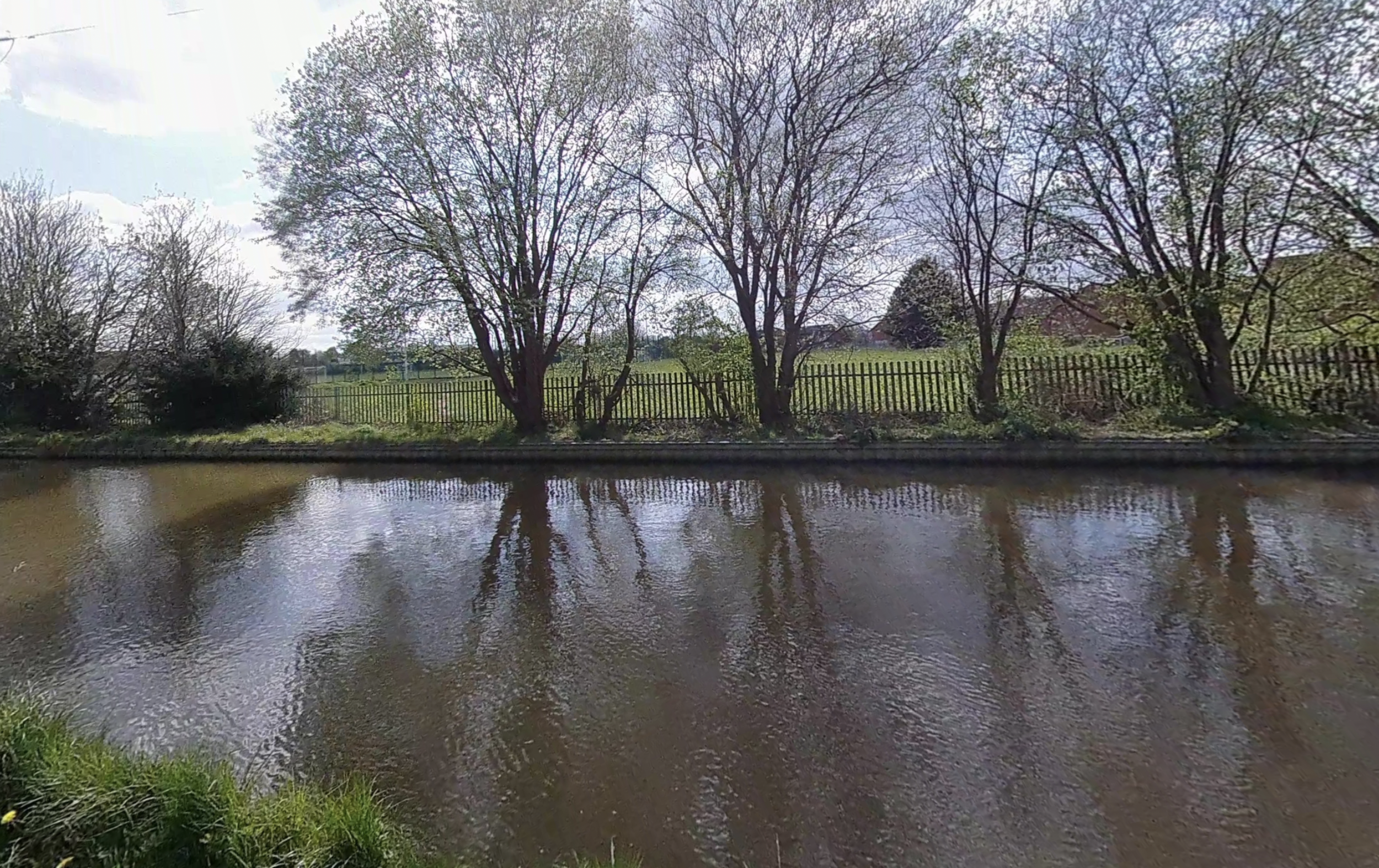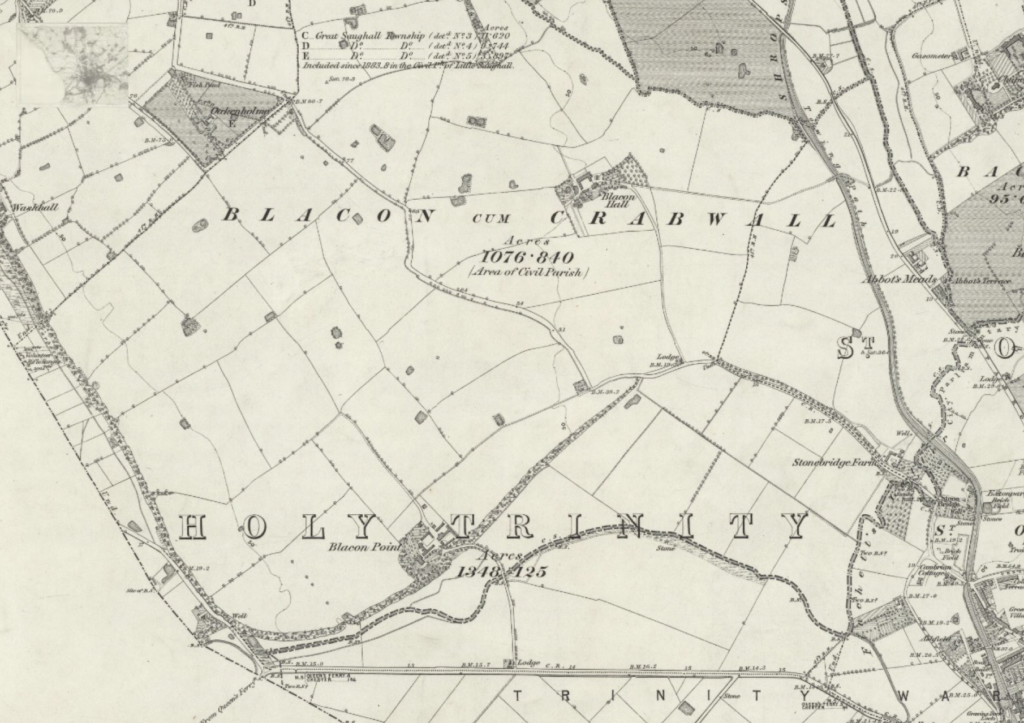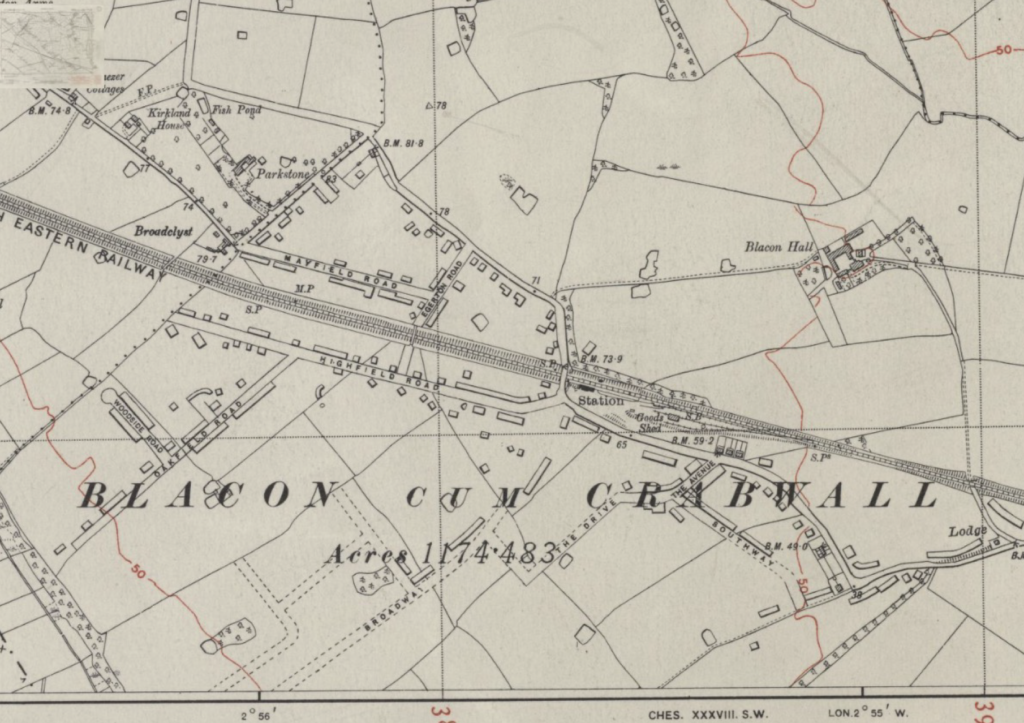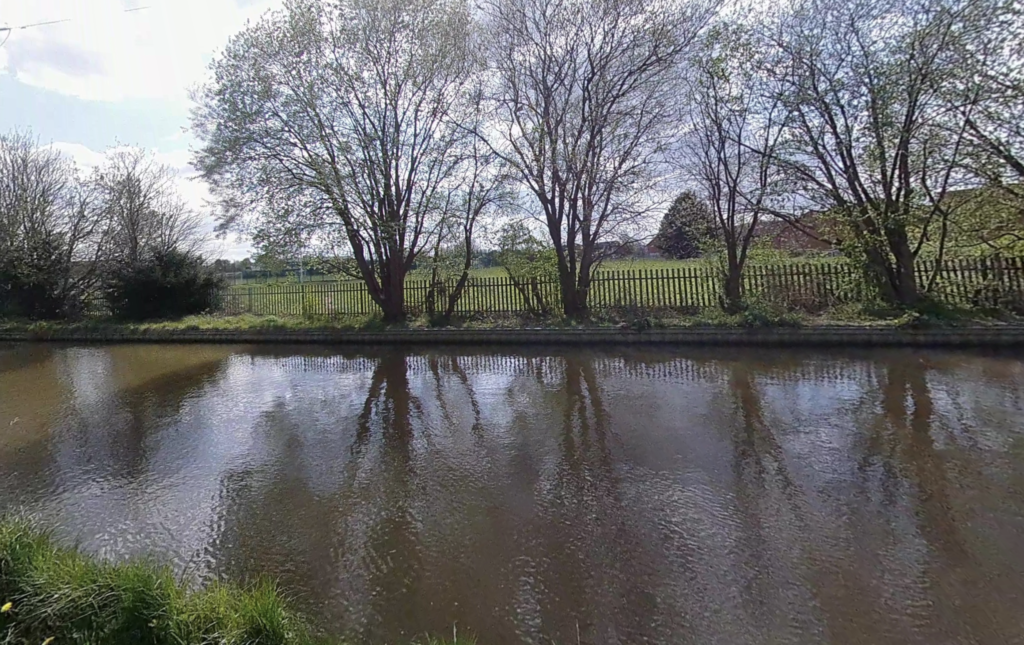
BACKGROUND
History
Blacon was originally known as Blakon Hill and was owned by the Marquess of Crewe. The Parish of Blacon cum Crabwall was formed in 1923 but in 1936 most of the parish was transferred to Chester County Borough.


It was a small farming village community until major building work by Chester City Council began in the early 1950s. Most of the older and original estate, was built in the ten years to 1960; though further parts were added on the old army camp site in South Blacon, in the late 1960s, 1970s and 1980s. ‘The Parade’ shops, built in 1954 in north Blacon, are an example of Chester City Council building. In 2015, the Parade Enterprise Centre opened, a joint venture between Avenue Services and Cheshire West and Chester Council. The Parade Enterprise Centre houses Sanctuary Housing, Blacon Library, as well as a community hall and various other offices for local businesses.
The British Army maintained an army camp in south Blacon, from just before, to just after, the Second World War. A mixture of wooden and ‘Nissen’ huts were occupied by soldiers until the late 1950s; and the army firing range was still in evidence until the Chester City Council ‘tower block’ buildings of the mid-1960s. Blacon Camp housed various military operations, containing aircraft and war prisoners at the time. This part of (South) Blacon is referred to as ‘The Camp’ by local residents.Blacon station was served from Chester Northgate Station but was closed to passengers on 9 September 1968 as part of the ‘Beeching Axe’ for the economic modernisation of the British railway network in the mid-1960s. Freight trains ran through Blacon until 1992. Although the old station and railway line have gone, they have been replaced with a cycle path, jogging track and a countryside walkway. This amenity is accessed from the side of old Blacon station bridge; but its route can also be joined (just off) Chester’s ‘Fountain’ roundabout, travelling via Blacon, and on to the North Wales countryside.

Profile
Blacon has a population of approx. 14,000. Its age profile shows that it has more younger people (under 19) and fewer older people (over 70) than the national averages. It has more 1 and 3 person households than the average, but fewer 2 and 4+ person households. It has many more houses and far fewer flats than average, with many more 2 and 3 bedroom homes and far fewer 1 and 4+ bedroom homes.
A much higher number of its households have no car or van and far fewer have 2 or more vehicles than average. The community has a much lower number of people working from home and far higher number travelling less than 6 miles to work than average. A much higher number of people work in supervisory, routine or semi-routine occupations than average, with fewer in small businesses, management or full-time students. Its unemployment rate is higher than the average and on some health indicators the health of the community is below average.
Strategic Planning Policy
The BCNP has been prepared to be in general conformity with the strategic policies of the Cheshire West and Chester Local Plan (Part One) adopted by CWaC in 2015 and the Cheshire West and Chester Local Plan (Part Two) adopted in 2019. A fuller explanation will be set out in the Basic Conditions Statement as part of the submission but the key policies affecting Blacon are:
- STRAT11 – supporting measures to protect, enhance or improve access to existing facilities, services and amenities that contribute to the quality of life of residents, businesses and visitors … (and to) facilitate the timely provision of additional facilities, services and infrastructure to meet identified needs
- SOC5 – supporting proposals to improve health and well-being, including opportunities to widen and strengthen the borough’s cultural, sport, recreation and leisure offer … (and to) consider the specific requirements of different groups in the community
- SOC6 – seeking to protect, manage and enhance existing open spaces, sport and recreation facilities to provide a network of diverse, multi-functional open spaces and showing them on its Policies Map.
- DM15 – identifies the full length of the Parade on Saughall Road/Blacon Avenue as a local retail centre but not the Western Avenue/Maitland Way area
- DM36, 37 and 39 – managing the improvement, replacement or loss of sports and recreation facilities and encourages proposals for new or improved community facilities, including supporting “neighbourhood plans and Neighbourhood Development Orders
CWaC is bringing forward a new Local Plan to cover the period to 2045 but this is at a very early stage in its process. If more is published by CWaC before the BCNP is submitted, an explanation of how reasoning and evidence of the Local Plan ties in with the BCNP will also be included in the Basic Conditions Statement.
National Planning Policy
The BCNP has also had regard to national planning policy and guidance as set out in the National Planning Policy Framework (NPPF). The Basic Conditions Statement contains further details but the key policies are:
- §30 – neighbourhood planning gives communities the power to develop a shared vision for their area, which can shape, direct and help to deliver sustainable development, by influencing local planning decisions
- §98a – planning should provide the social, recreational and cultural facilities and services the community needs, planning policies and decisions such as local shops, meeting places, sports venues, open space, cultural buildings, public houses and places of worship)
- §98c/d – planning should also guard against the unnecessary loss of valued facilities and services, particularly where this would reduce the community’s ability to meet its day-to-day needs and should ensure that established shops, facilities and services are able to develop and modernise, and are retained for the benefit of the community
- §103 – access to a network of high quality open spaces and opportunities for sport and physical activity is important for the health and well-being of communities, and can deliver wider benefits for nature and support efforts to address climate change
- §106 – the designation of land as Local Green Space through local and neighbourhood plans allows communities to identify and protect green areas of particular importance to them.
- §176 – plans should apply a sequential, risk-based approach to the location of development so as to avoid, where possible, flood risk to people and property
The BCNP must demonstrate how its policies contribute to the achievement of sustainable development and how they will not cause any harm to important ecological areas (in respect of the Habitats Regulations). Both of these matters are also addressed in the Basic Conditions Statement.
Project Progress
Having set up the project in late 2023, the BNA was keen to understand from the local community what it saw as the main planning and development issues in Blacon. A Community Engagement exercise was carried out through the summer and a report was produced in September 2024 by Cheshire Community Action (CCA) for the BNA. The report summarised the key issues raised by the community, which focused on the delivery of a new Community Hub facility and an Indoor Sports Facility, as well as wanting to protect existing community facilities, local shops and green spaces in Blacon.
The BNA commissioned a Feasibility Study in October 2024 to explore how these ambitions could be realised on one or both of the sites at Cairns Crescent sports ground and at Blacon High School. The Study was completed in February 2025 and concluded that the Cairns Crescent site could accommodate a new Sports & Community Hub as part of a project to improve the existing pitches and facilities. It also concluded that although there were options to reuse land at the High School, there were legal obstacles which may become too difficult to overcome. The Study has been used to inform Policy BLACON1 of the BCNP and the NDO.
The BNA will publish a Consultation Statement as part of the submission documents that will summarise the nature and outcome of the informal engagement and statutory consultation activities and how they have informed the BCNP.